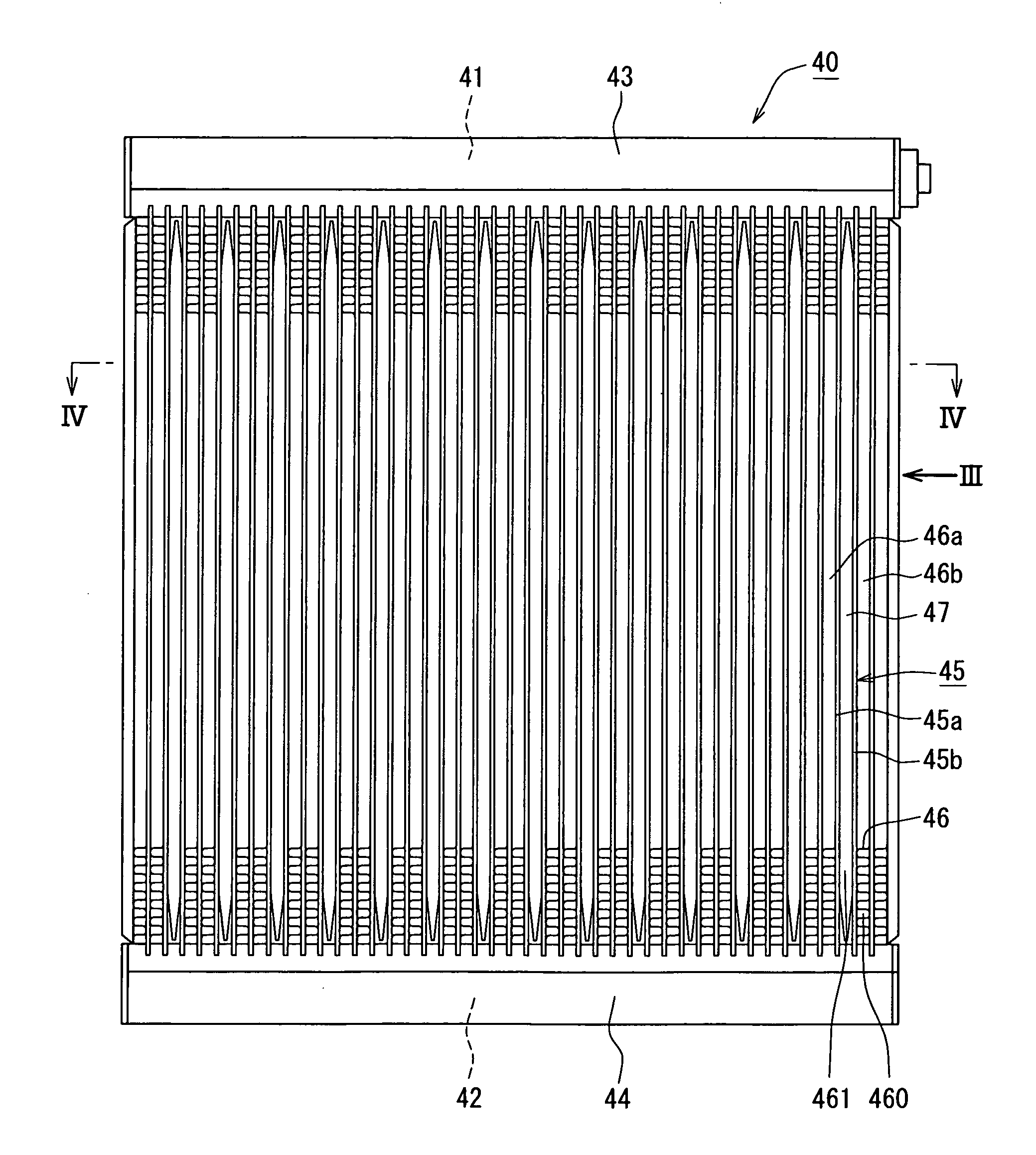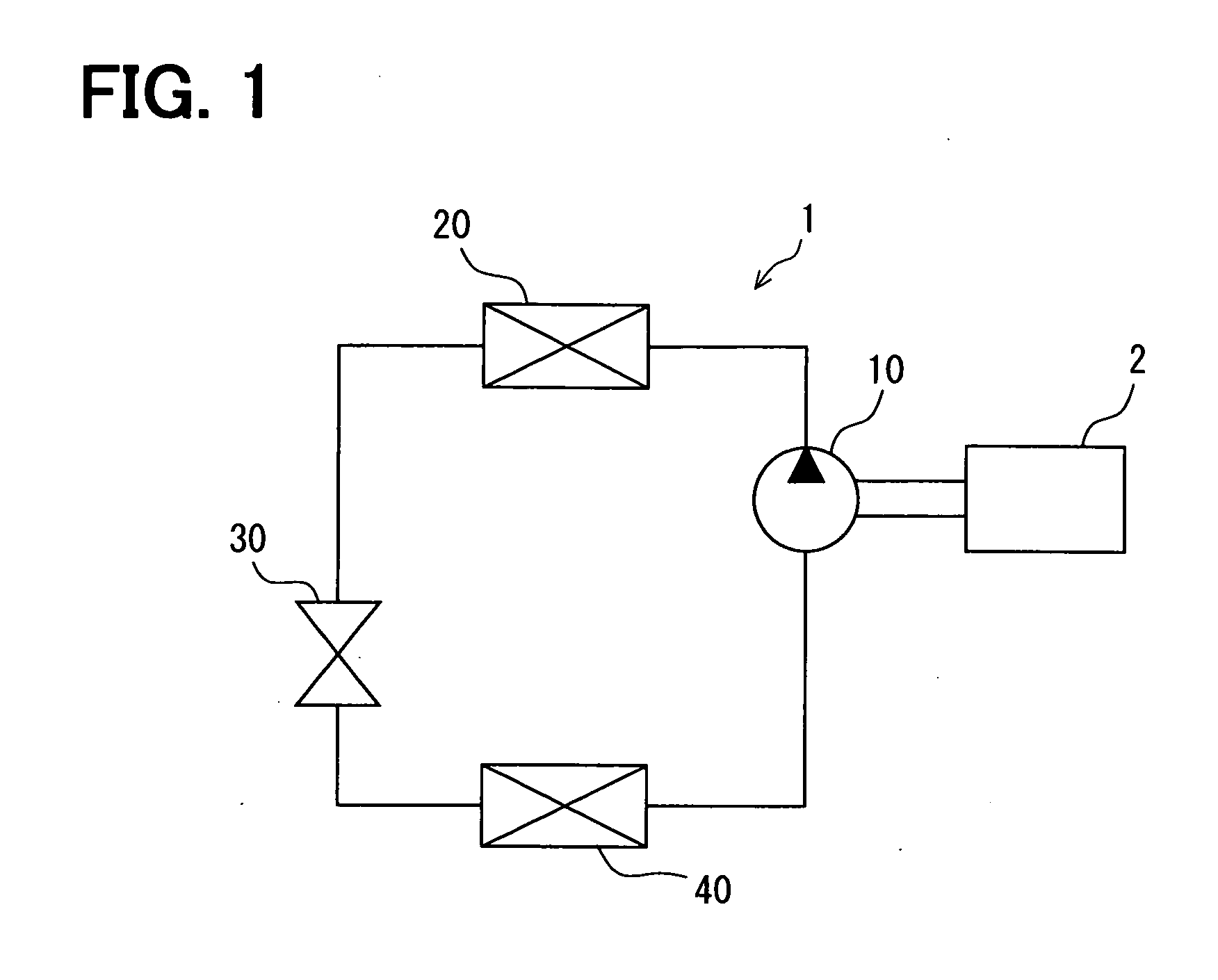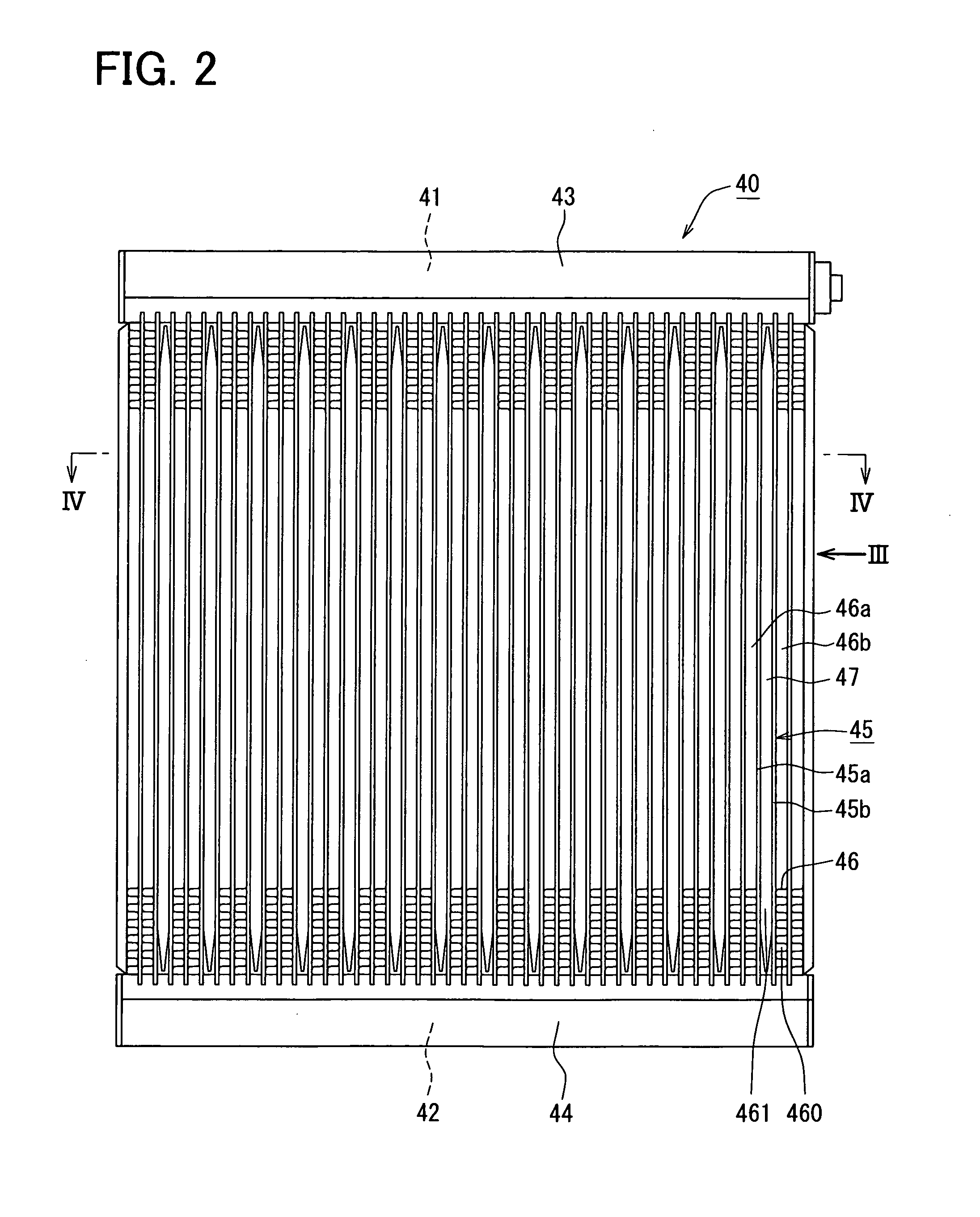Cold-storage heat exchanger
a heat exchanger and cold storage technology, applied in the field of cold storage heat exchangers, can solve the problems of increasing costs and frost breakag
- Summary
- Abstract
- Description
- Claims
- Application Information
AI Technical Summary
Benefits of technology
Problems solved by technology
Method used
Image
Examples
first embodiment
[0054]FIG. 1 is a schematic diagram showing a refrigerant cycle device 1 for a vehicle air conditioner, according to a first embodiment of the invention. The refrigerant cycle device 1 for an air conditioner includes a compressor 10, a radiator 20, a decompression device 30 and an evaporator 40. The components of the refrigerant cycle device 1 are connected in cycle by piping, thereby configuring a refrigerant circuit.
[0055]The compressor 10 is driven by an internal combustion engine (or electrical motor etc.) that is a driving source 2 for a vehicle traveling. Thus, the compressor 10 is also stopped when the driving source 2 stops. The compressor 10 draws refrigerant flowing out of the evaporator 40, compresses the drawn refrigerant, and discharge the compressed refrigerant toward the radiator 20. The radiator 20 is configured to cool high-temperature refrigerant from the compressor 10. The radiator 20 is also called as a condenser. The decompression device 30 decompresses the refr...
second embodiment
[0096]Next, a second embodiment of the invention will be described. FIG. 9 is a side view showing a cold storage container 47 according to the second embodiment, corresponding to that of FIG. 6. In the present embodiment and the following embodiments, a part that corresponds to a matter described in the above first embodiment may be assigned with the same reference numeral, and the explanation for the part may be omitted. Only different structures and features different from the above-described first embodiment will be mainly described in the present embodiment and the following embodiments.
[0097]As shown in FIG. 9, in the second embodiment, the cold storage container 47 is provided with plural protrusion portions 47a1 each having an open-hole shape at its center portion (i.e., protrusion tip surface). As shown in FIG. 10, via open-hole portions 47a3 opened at the protrusion portions 47a1, the cold storage material 50 in the cold storage container 47 can directly contact the surface...
third embodiment
[0109]FIG. 17 is an enlarged sectional view showing relationships between a refrigerant tube, a cold storage container and an air-side fin, according to a third embodiment, in a section taken along the line V-V of FIG. 3 similarly to FIG. 5. In the third embodiment, a bonding ratio of the outer surface of the cold storage container 47 or a bonding ratio of the inner surface of the cold storage container 47 is set in a predetermined range.
[0110]In FIG. 17, 460 indicates a cooling air passage, and 461a indicates a cold-storage side air passage. In a case where the surface of the cold storage container 47 is configured to have ribs of an uneven shape, when an area ratio of the outer surface of the cold storage container 47 defining the protrusion portions 47a1 is set at X %, and when an area ratio of the inner surface of the cold storage container 47 defining the recess portion 47a2 is set at Y %, X+Y=100%. Here, the outer surface of the cold storage container 47 defining the protrusio...
PUM
 Login to View More
Login to View More Abstract
Description
Claims
Application Information
 Login to View More
Login to View More - R&D
- Intellectual Property
- Life Sciences
- Materials
- Tech Scout
- Unparalleled Data Quality
- Higher Quality Content
- 60% Fewer Hallucinations
Browse by: Latest US Patents, China's latest patents, Technical Efficacy Thesaurus, Application Domain, Technology Topic, Popular Technical Reports.
© 2025 PatSnap. All rights reserved.Legal|Privacy policy|Modern Slavery Act Transparency Statement|Sitemap|About US| Contact US: help@patsnap.com



